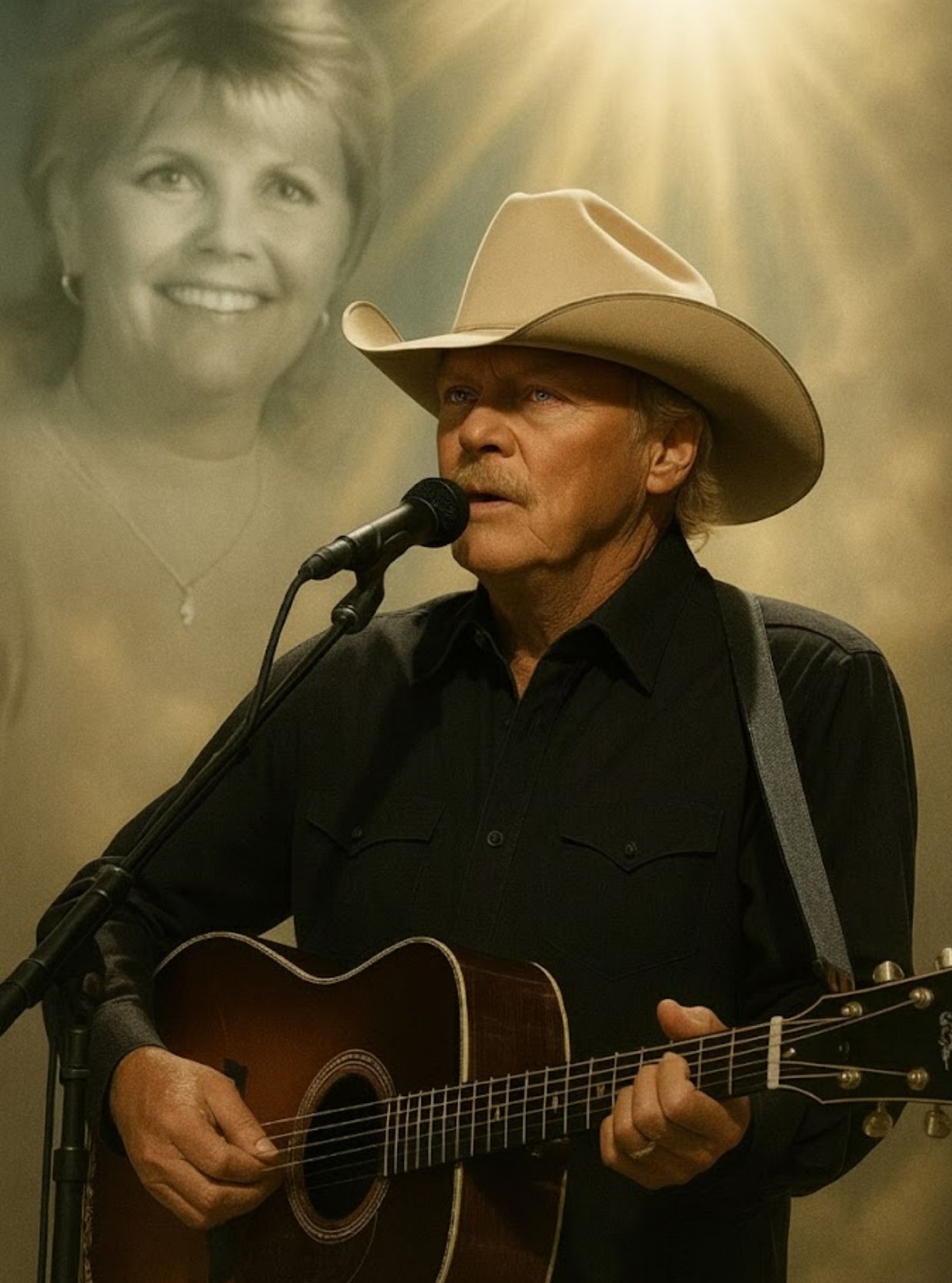ALAN JACKSON – “SISSY’S SONG”: A BEAUTIFUL TRIBUTE BORN FROM LOSS AND FAITH 🤍🎶
When Alan Jackson released “Sissy’s Song” in 2008, it wasn’t just another country ballad — it was a prayer, a heartfelt letter to heaven, and one of the most personal songs of his entire career. Written in memory of a family friend who passed away unexpectedly, the song captures the raw ache of loss and the quiet comfort of faith with a simplicity only Alan could deliver.
The story began when Sissy Fitzgerald, a beloved housekeeper and close friend of the Jackson family, tragically lost her life in a motorcycle accident near their Tennessee home. Her passing left Alan and his family deeply shaken. In the days that followed, he did what he’s always done in moments of pain — he turned to music.
“I was sitting at home after her funeral,” Alan later recalled, “and I just started writing. It was really just me trying to make sense of what happened — to say goodbye the only way I knew how.”
The result was “Sissy’s Song” — a simple, elegant piece that blends acoustic guitar, gentle harmony, and spiritual reflection. The lyrics are as personal as they are universal:
“Why did she have to go so young?
I just don’t know why.
It feels like she’s always been here —
It was her time to fly.”
There’s no bitterness in the song, only acceptance. The chorus, “She flew up to Heaven on the wings of angels,” carries a kind of peace that resonates with anyone who has ever lost someone they love. It’s the sound of grief softened by faith — sorrow held in the arms of belief that death is not the end.
Fans were deeply moved. The song quickly became a favorite at funerals, memorial services, and family gatherings — not because it wallows in sadness, but because it gently lifts the listener toward hope.
“It’s not about death,” one fan wrote online. “It’s about grace. It’s about knowing our loved ones are still with us.”
The music video, filmed in black and white at Alan’s family farmhouse in Tennessee, perfectly mirrors the song’s emotion. Standing on his front porch, Alan performs with quiet reverence as sunlight flickers through the trees — a visual hymn to love and remembrance.
“I didn’t want anything fancy,” Alan said. “I wanted it to feel real — like the way you sit on your porch after losing someone and just talk to God.”
Critics praised the song for its authenticity and emotional restraint. Billboard described it as “one of the most heartfelt performances of Jackson’s career,” while Rolling Stone called it “a rare country elegy that feels both deeply personal and universally healing.”
During live performances, “Sissy’s Song” often became the emotional centerpiece of the night. Fans would hold up lighters or phone lights, the room glowing softly as Alan sang the final line:
“She flew up to Heaven on the wings of angels,
By the clouds and stars and paths she knew.
And when she left this world behind her,
Heaven was a brighter place she flew.”
It was more than a song — it was a moment of connection between artist and audience, between earth and eternity.
Over time, “Sissy’s Song” has taken on a life beyond its original story. It’s been sung at countless memorials, requested on radio shows by grieving families, and embraced by those finding strength through loss.
In true Alan Jackson fashion, the beauty lies in the simplicity — no dramatic production, no overstatement, just an honest melody wrapped in faith.
“I think that’s why people connect with it,” Alan once said. “It’s just a simple message — that love doesn’t end when someone leaves. It just changes shape.”
Even now, years later, “Sissy’s Song” stands as one of Alan’s most timeless and tender works — a reminder that behind every country legend is a man who still writes his pain into poetry.
Because at its heart, the song isn’t about death at all.
It’s about love — the kind that never leaves, even when someone does. 🤍🎵
